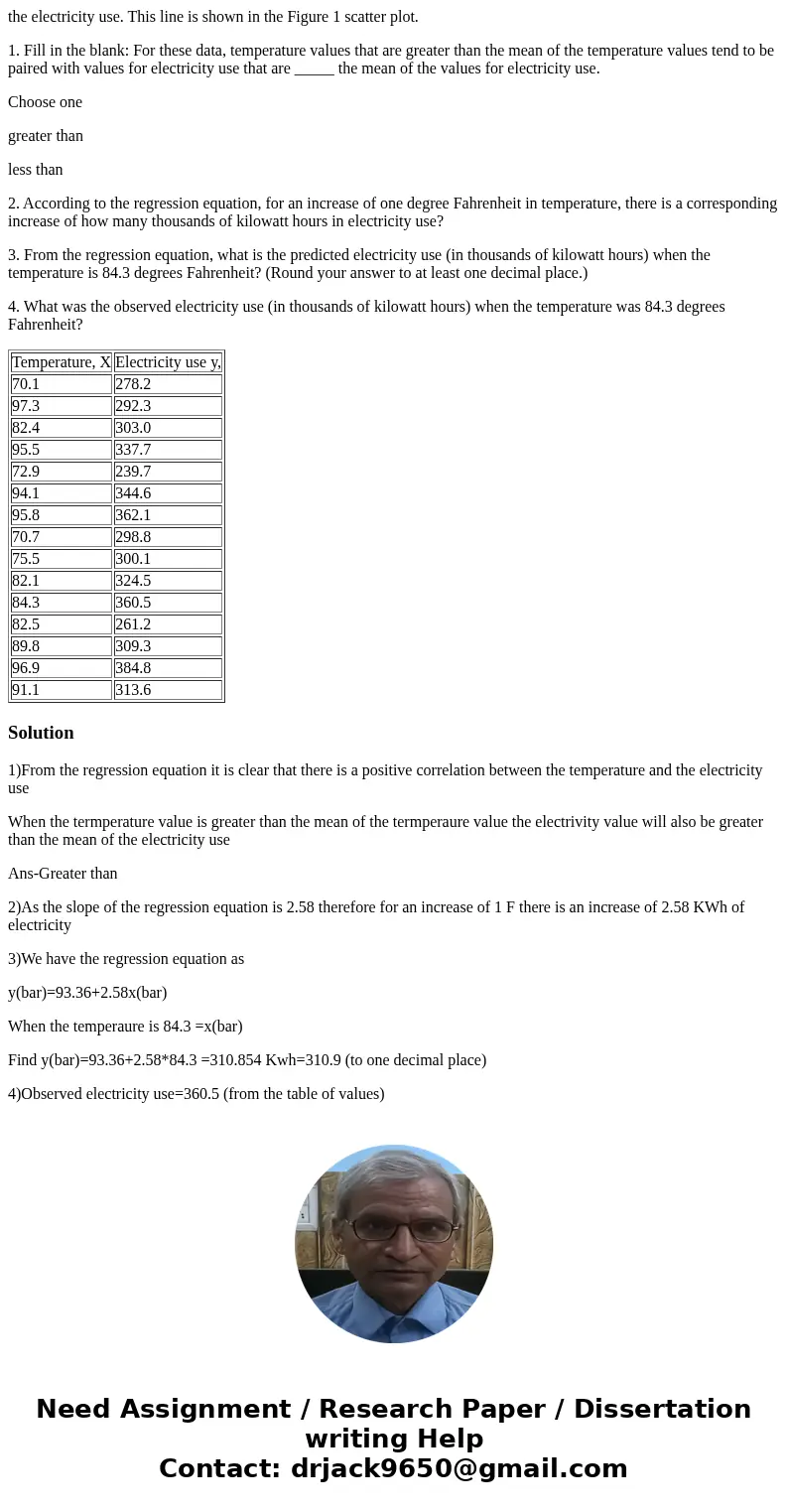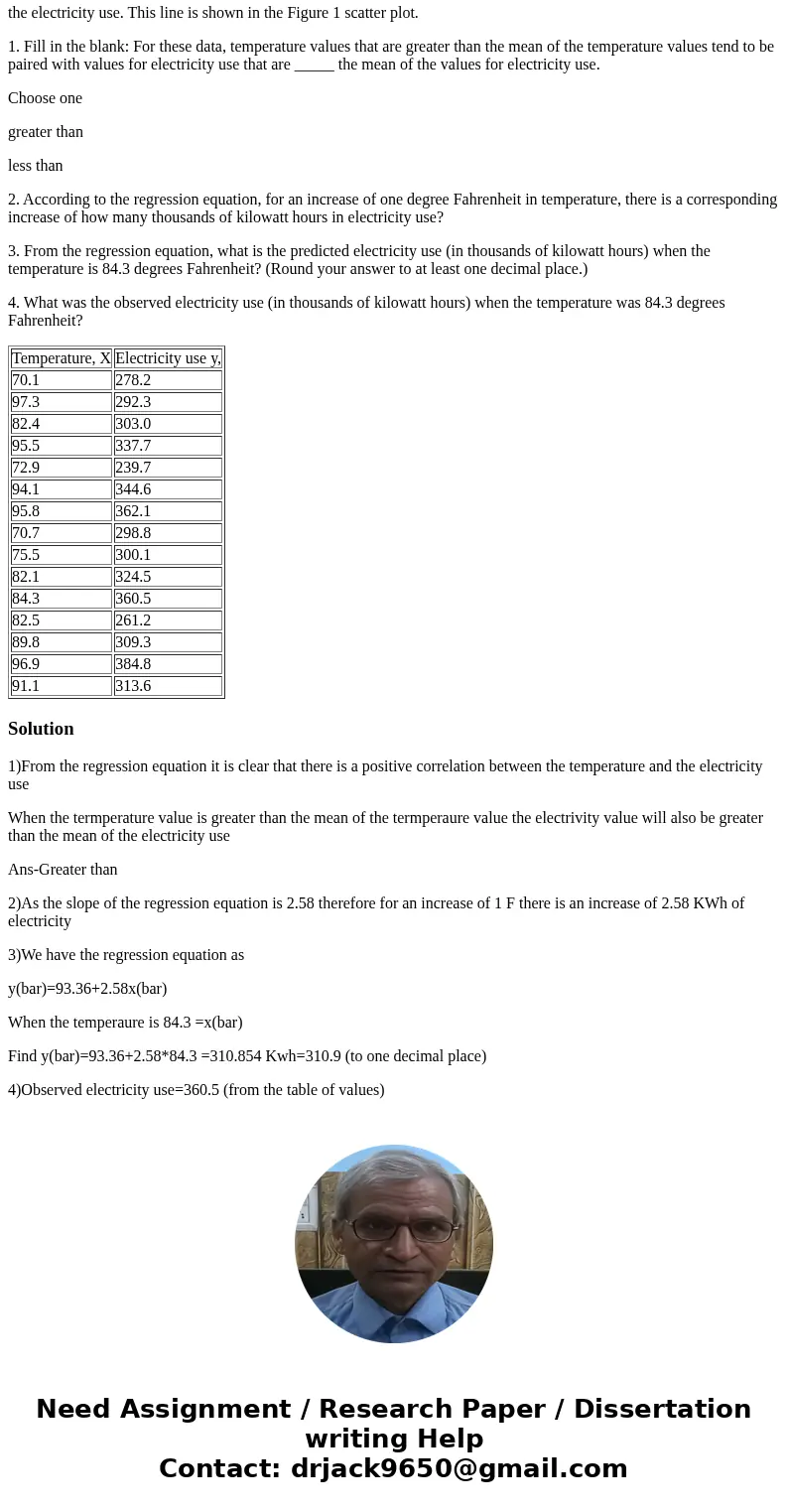the electricity use This line is shown in the Figure 1 scatt
the electricity use. This line is shown in the Figure 1 scatter plot.
1. Fill in the blank: For these data, temperature values that are greater than the mean of the temperature values tend to be paired with values for electricity use that are _____ the mean of the values for electricity use.
Choose one
greater than
less than
2. According to the regression equation, for an increase of one degree Fahrenheit in temperature, there is a corresponding increase of how many thousands of kilowatt hours in electricity use?
3. From the regression equation, what is the predicted electricity use (in thousands of kilowatt hours) when the temperature is 84.3 degrees Fahrenheit? (Round your answer to at least one decimal place.)
4. What was the observed electricity use (in thousands of kilowatt hours) when the temperature was 84.3 degrees Fahrenheit?
| Temperature, X | Electricity use y, |
| 70.1 | 278.2 |
| 97.3 | 292.3 |
| 82.4 | 303.0 |
| 95.5 | 337.7 |
| 72.9 | 239.7 |
| 94.1 | 344.6 |
| 95.8 | 362.1 |
| 70.7 | 298.8 |
| 75.5 | 300.1 |
| 82.1 | 324.5 |
| 84.3 | 360.5 |
| 82.5 | 261.2 |
| 89.8 | 309.3 |
| 96.9 | 384.8 |
| 91.1 | 313.6 |
Solution
1)From the regression equation it is clear that there is a positive correlation between the temperature and the electricity use
When the termperature value is greater than the mean of the termperaure value the electrivity value will also be greater than the mean of the electricity use
Ans-Greater than
2)As the slope of the regression equation is 2.58 therefore for an increase of 1 F there is an increase of 2.58 KWh of electricity
3)We have the regression equation as
y(bar)=93.36+2.58x(bar)
When the temperaure is 84.3 =x(bar)
Find y(bar)=93.36+2.58*84.3 =310.854 Kwh=310.9 (to one decimal place)
4)Observed electricity use=360.5 (from the table of values)


 Homework Sourse
Homework Sourse